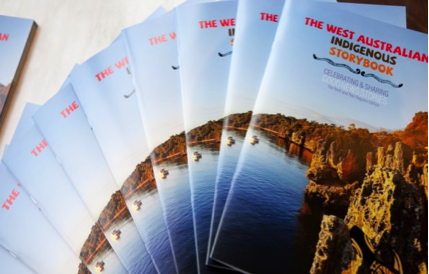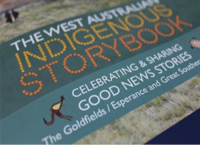
In Perth during the 1970s, Professor Fiona Stanley collected newspaper articles about Aboriginal health for a year and found that 90 per cent were negative. It is distressing that 40 years later, this trend has not changed all that much. In fact, a recent study conducted by the Public Health Advocacy Institute in WA (PHAIWA) identified that during 2012, 74 per cent of media articles that appeared in the main WA print media and featured Aboriginal health, were negative. The most common negative topics were alcohol, child abuse, petrol sniffing, violence, suicide, deaths in custody and crime.
We have all observed the negative spin in Aboriginal health stories. So often they are about problems rather than community-based solutions that have been developed, and do not give credit to the many positive, life changing projects and programs being implemented in Aboriginal communities.
One strategy to overcome the sense of hopelessness created through negative media is to focus on positive models of change and commitment in Aboriginal communities. There is great value in capturing positive changes, in collecting and amplifying the voices of Aboriginal people and organisations who are role models, and who run successful ventures in their communities. So in 2011, PHAIWA decided to act on this and try something different. With help from the WA Government and Healthway, the first ever Western Australian Indigenous Storybook was launched in Broome. This Storybook included 13 positive stories that shared successes and challenges. The stories described local services, partnerships, personal journeys and programs which aimed (and succeeded) in improving the quality of life, social outcomes and general wellbeing for Aboriginal peoples.
We recently launched the fifth Western Australian Indigenous Storybook – indicating its strength and support. Each book focuses on a region of Western Australia and showcases local people and programs. There is no charge for these books and they are available in hard copy or online.
The success of these books not only relates to the excellent and positive stories, which are in many cases written by Aboriginal people, but also in its format. The full colour books provide many illustrations, follow an easy to read and non-threatening story format and include contact details of all authors. These books have been able to look more deeply into issues and illustrate responsible and less sensationalist reporting on a diverse range of topics and issues that affect health including personal journeys, Aboriginal art, language, education, sport, environmental stewardship and preventive health projects. These achievements are worth talking about and in some cases are worth replicating in other communities.
I recently visited an Aboriginal Mental Health worker from Esperance, a city located on WA’s southeast coast. Violet is a Noongar, Yamaji and Wongai woman from Carnarvon. At seven years of age she was taken from her family and sent to live in Nazarius House in Geraldton for two years. Violet’s determined mother fought hard and eventually managed to collect her and take her home. Violet was the first Indigenous person to complete Year 12 in Carnarvon shortly before moving to Perth and then to Esperance. After trying her hand at a number of jobs, Violet decided that she could do the most for her people by helping them through some tough times. She successfully completed the Aboriginal mental health worker training and is working on the Closing the Gap strategy as well as delivering art programs. She completely inspired me when she said: “I want to try and be a role model to Indigenous youth that are out there to say ‘don’t give up, keep going’ although we’ve had some really hard pathways there’s always a rainbow at the end if you keep trying.”
There are many stories like Violet’s and there are many Indigenous organisations making life better for their communities. It is very easy to see only the negative, given the statistics that seem to bombard us and the negative reporting in the media. This is why the WA Indigenous Storybook is so important. Sharing stories helps to showcase and create awareness of the many positive activities that occur daily in Aboriginal communities. They include wonderful small moments as well as big ideas that have helped to improve broader social and health outcomes.
Our hope is that these Storybooks will become a social institution enabling stories and ideas to be shared across all West Australian communities, because positive stories matter at so many levels.
—
Melissa Stoneham is the Deputy Director of the Public Health Advocacy Institute, WA


